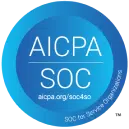Applying metrics to drive business benefits
13. Embedding a culture of continuous self-improvement through metrics
Creating a hierarchy of metrics that everybody understands
Insight-driven Agile Delivery© (IDAD) is a framework that provides a simple hierarchy of metrics so that end-to-end delivery metrics are understood and adopted by everyone. This is especially important when team members are working remotely and are under increased pressure to deliver.
As shown conceptually in Figure 34 below, the metrics are self-reinforcing, with team-level metrics rolling up to your overall ‘North Star’ (delivery health metrics) set by the technology leadership team.

The ‘North Star’ metrics are carefully selected to reflect the organisation’s overall delivery objectives (often related to core Agile objectives) and are the metrics around which technology leadership wants the delivery organization to align in order to deliver better over time.
Metrics are then cascaded across the delivery organisation, with customised dashboards provided (using Plandek) to surface a balanced scorecard of metrics owned by teams and key managers, covering the end-to-end software delivery process.
The key is that these team metrics should be leading metrics that are deterministic of improving the process (and improving the North Star metrics) – rather than lagging metrics that simply “look in the rear-view mirror”.
So, what is a sensible set of metrics to adopt?
In our view, metrics should always reflect the client’s context and objectives. Hence, IDAD is intended as the basis from which clients can build their own bespoke metrics sets that closely mirror their own specific objectives.
Many organisations will take the IDAD metrics listed in this section as a good place to start. We would agree, as the IDAD metrics ensure that you continue to deliver against the most central Agile principles at a time of rapid change and stress.
However, there are a variety of commonly used metrics setting approaches – such as OKRs (Objectives and Key Results) or GQMs (Goal, Metric, Question) as popularised by Victor Basili, which can also be applied to define a bespoke metric set.
In our view, whichever route you take is very much up to you, but it is the discipline of tracking and managing metrics (that reflect core Agile principles) that is critical – so that when the chips are down, everyone across your organisation is focused on the things that really matter.
Suggested ‘North Star’ metrics
We are not trying to reinvent the wheel with IDAD – it simply offers a set of leading metrics that track your ability to improve against the central Agile principle of software delivery continuously.
These suggested metrics summarise your “Agile health” – your ability to deliver software effectively, despite the constraints. They are meaningful when tracked over time at an aggregate level – and give your whole organisation a simple set of metrics around which to align.
- Time to Value: the core Agile metric tracking how “early” you are delivering value for customers. Measured from the beginning of the development process through to deployment.
- Deployment Frequency: a key metric of how “continuously” you are delivering.
- Throughput: how much value you are delivering. There are many ways Agile teams will measure this, but Story Points, Value Points, or Tickets Completed are a common place to start.
- Defect Density: a key measure of your ability to continue to deliver high-quality software, commonly measured by the ratio of stories delivered to Escaped Defects (or production defects).
- Team Engagement: our favourite metric in the ‘new normal’ world of remote working. Best collected via polling on collaboration hubs like Slack and, in our view, the key leading indicator of delivery health, as software delivery is absolutely dependent on your team struggling with the pressures of the current environment.
Cascading metrics – our top 5 metrics for managers and teams
The power of metrics is realised if metrics are vocally sponsored by leadership and are then cascaded across the organisation to the key functions, programmes and Agile teams (squads) responsible for software delivery.
Our top 5 team metrics to improve your overall delivery capability are shown in the table below.

The challenge – creating a virtuous circle of metrics-led continuous improvement (led by Teams)
The IDAD framework is designed to help organisations who may be moving to a metrics-led delivery culture for the first time select and cascade out a meaningful set of end-to-end delivery metrics.
Becoming more metrics-led is a classic change management challenge that is the bread-and-butter of SIs like Accenture and Deloitte. However, the Plandek Customer Success Team has unique experiences globally in this very particular challenge.
Embedding a continuous improvement programme across a busy delivery organisation is not a trivial task. It requires:
- Strong leadership sponsorship;
- A well-defined hierarchy of metrics;
- A means of surfacing those metrics in customisable dashboards available at all levels within the delivery organisation and
- Strong sponsorship and ownership at Scrum Master and Team level.
As per point (4), the Plandek Customer Success team works closely at the team level to help Team Leads embed metrics in the ‘rhythm’ of their workflow so that the metrics that they have selected as appropriate (and in keeping with the overall North Star metrics adopted by technology leadership) become ‘second nature’ and are embedded in their daily, weekly and sprint processes. Targets are set, and teams embed metric discussion in their stand-ups, sprint retros and other key communication points.
When this happens, it unleashes a powerful continuous-improvement effect that quickly translates into significant and lasting performance improvements at the organisational level. (See Case Studies).








